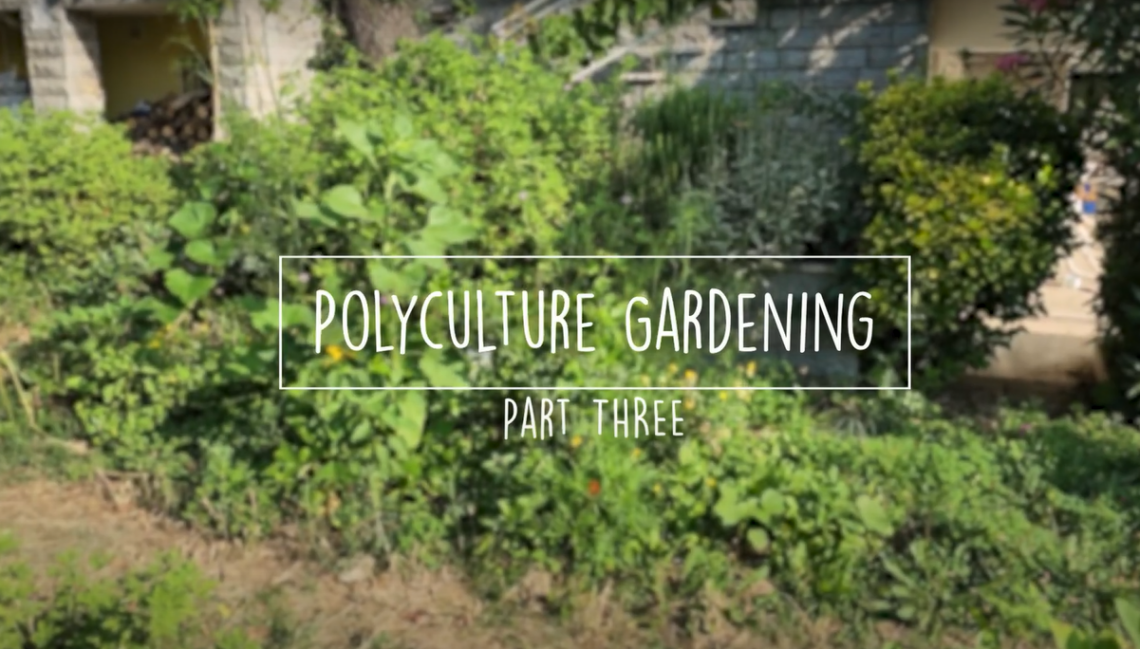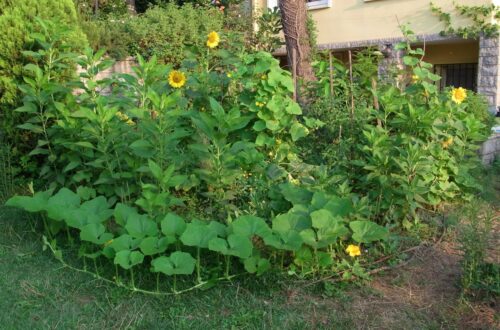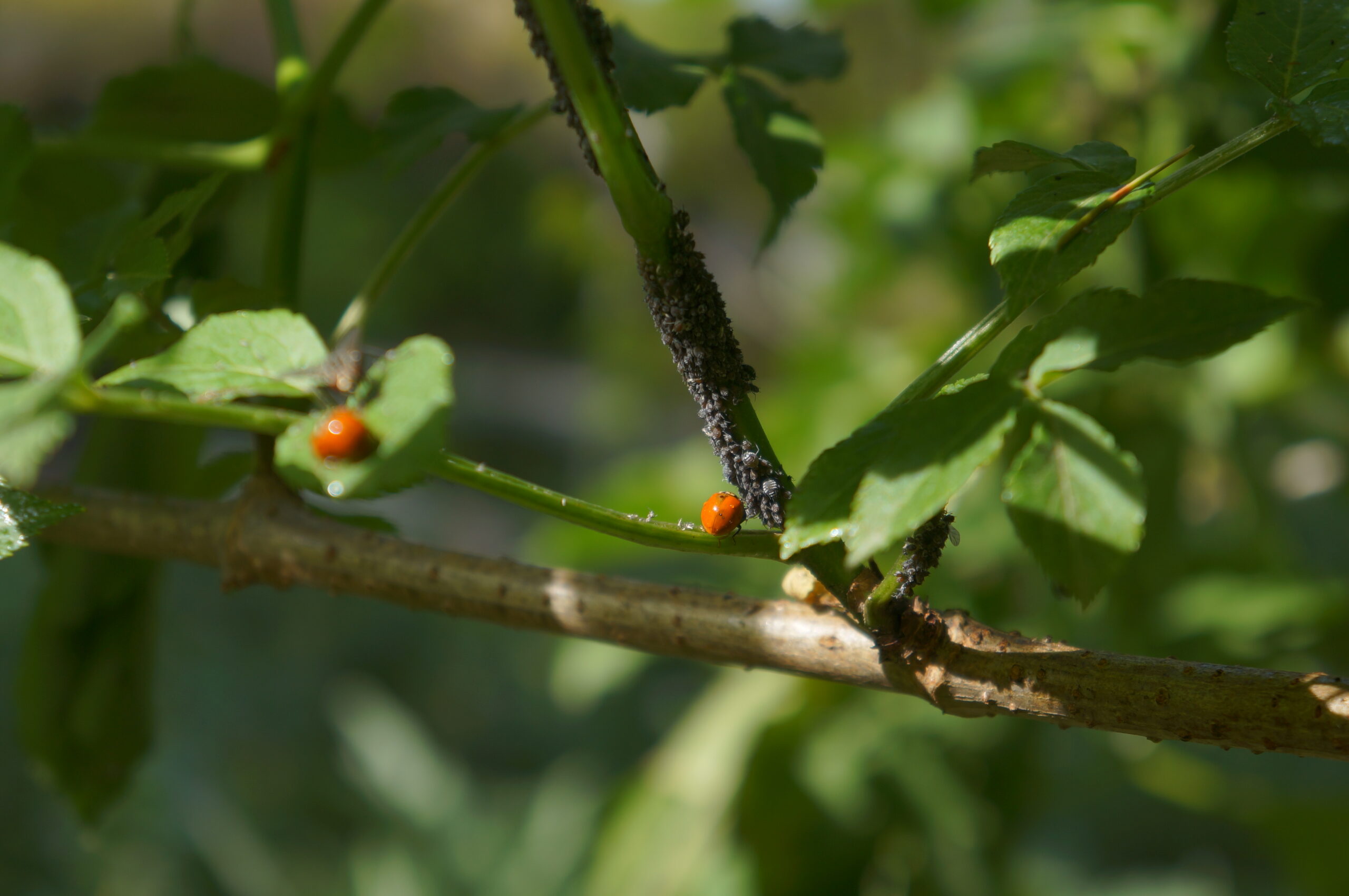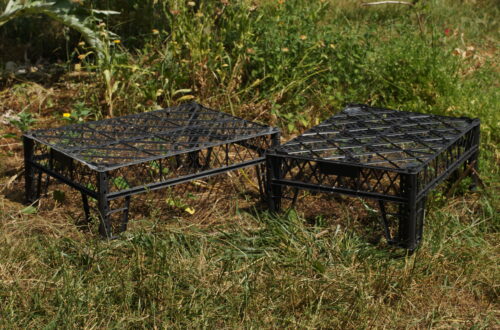
Polyculture Gardening // Part III
/
This is a spontaneous bed that we created over lawn. Some of the plants are perennials, some of them are annuals. Having perennials in a bed is both challenging and fun to play around with. Here are the plants we have:
Sunflower
Sunflower is a beautiful plant. It’s fairly easy to grow, you just have to keep an eye on those slugs and snails when the plant is small! Other than that it likes sun and an open space. It has a long growing time and flowers about 3 months after planting.
- Once it flowers, all kinds of bees, especially bumble bees come to pollinate it. So it’s perfect for attracting pollinators to other plants around it.
- It’s a living trellis for beans and cucumbers. In this bed I planted some beans around it.
Gooseberry
I wanted to have more berries in the garden, so I planted gooseberry which is hardy , have tasty fruit and can be easily propagated by cuttings.
Marigold
Aside from its wonderful qualities as a pollinator attractor and pest deterrent, it looks beautiful when planted on the edge of the bed.
Cotton
It was my long time desire to make my own yarn using raw materials. Last year I started combing and spinning wool. This year I wanted to explore the cotton plant. I planted Erlene’s Green Cotton seed in early spring, but only 2 plants survived. They’re growing good so far and hopefully I’ll collect more seeds to plant for next year.
Zinnia
It attracts all kinds of bees and butterflies as well as parasitic wasps and lacewings. Lacewings lay their larvae in aphid infested plants so their young can eat them all!
Zinnia is easy to grow, but it’s a slow grower if you plant it in early spring. It grows much quickly as the weather warms up. A great flower to spread around the vegetable bed.
Clover and Wood Sorrel
They both grow wild in the garden and kind of look alike.
Wood sorrel has yellow flowers and it spreads its seeds by popping them all over.
Clover has white, pink or red flowers and the leaves have a little bit of white on them. It fixes nitrogen to soil, so it’s a good companion for the hungry vegetables .
Here are their common benefits:
- They’re a good groundcover
- Don’t need any maintenance
- Have edible leaves
Dandelion
One of my favorite wild plants! With its taproot it draws up nutrients deep down the soil to its leaves. Once you chop and mulch it, all the minerals that other shallow rooted vegetables can’t reach are ready for them!
- I add its young leaves to salads, make coffee from its roots , medicinal tea with the whole plant, fermented soda from its flowers and made cordage for basketmaking from its flower stalks!
- It attracts beneficial insects with its flowers.
- Loosens the soil with its taproot.
- A good ground cover.
Pepper
Is a heat loving plant that doesn’t consume much nutrients in the soil. Even though it likes hot weather, it wilts quickly in direct sun. That’s why I planted it next to sunflower so its large leaves will provide some shade for the pepper.
Worm Tower
Last fall we made worm towers by drilling holes to large pvc pipes and burying them in soil.We keep putting vegetable scraps and dried leaves in it until it’s full and close its lid. We have 4 of them in different parts of the garden and they work great so far. Worms and other decomposers come in from the holes and eat away the scraps, turning them into compost!
Tomato
I had too many tomato seedlings and had to find creative places to put them. So I planted one near the worm tower. It will get plenty of nutrients from it.
Basil
It deters pests with its smell and attracts pollinators when it’s flowering.
Zucchini
It’s easy to grow, provides lots of food for summer and shades the soil with its giant leaves !
Fennel
There are a couple of fennel plants in this bed that were seeded by another one nearby. I let them grow as I really like to eat its fresh leaves in salads and stir fries. They are also hosts for anise swallowtail butterfly larvae and can be used as trellises.
Cucumber
I don’t remember planting cucumber here but it grows happily, so I let it be. The fennel next to it serves as a living trellis.
Feijoa
It’s a tropical plant with beautiful flowers that attract beneficial insects and edible fruits.I read about it a lot in permaculture books, so I wanted to give it a try! All the plants around it and the big Himalayan cedar above it create a micro climate for it to grow.
Post Views: 1,836


You May Also Like

Polyculture Gardening
June 3, 2021
Natural aphid control : Ladybugs!
April 18, 2025
